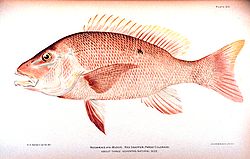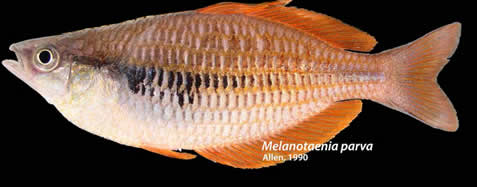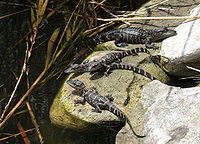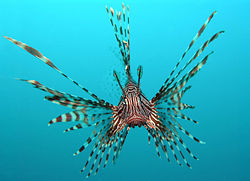Category Archives: Environmental
Iceland Puts Over 200 Whales On Ice
Well now, for being a cold country, Iceland could be landing itself in the hot seat.
It has been reported, from various Whale and Dolphin Society sources, that both the Icelandic fin whaling season and the minke whaling season have come to a close last week.
Some 208 whales have been killed off, which is two more than they killed last year.
Of those 208 whales, 148 were fin whales, and 60 were minke whales. These whales are estimated to be put to good use by creating more than 1,900 tonnes of whale products. This estimate comes from the government of Iceland itself.
Even though the popularity of whale meat has dropped off substantially in both Japan and other European whaling nations, the fin whaling industry of Iceland has made a record catch, the biggest haul since 1985, and is leading people to ask the question “just what are they planning to do with all those whale products”?
The Hvalur fin whaling company is trying to get around the fact that there just isn’t any demand for whale meat locally, by trying to peddle their wares in Japan, and is also pushing some new kinds of whale products. They have even proposed using whale oil to fuel whaling vessels!
This leads one to ask themselves.. Why kill all those whales? If nobody is buying, it is such a waste… Sounds like sometime in the near future, Iceland putting all these whales on ice, might just land them in a heap of hot water..
Despite Oil Spill, Fish Fry Showing up In Record Numbers in Gulf of Mexico
Snapper fry are all over the place. There are also trout, grunt and grouper fry all over the place as well. The early tabulation of the annual count in the beds of grass spattered about the northern part of the Gulf of Mexico seems to suggest that the larvae of some kinds of fish have survived the BP oil fiasco, and what’s more, there are swarms of them.
“My preliminary assessment, it looks good, it looks like we dodged a bullet. In terms of the numbers of baby snapper and other species present in the grass beds, things look right,” commented a scientist with the University of North Carolina’s Institute of Marine Science, Joel Fodrie, who has been actively involved in the study of seagrass meadows along the coast for the past five years.
Joel’s group has taken samples of the different sea life in the grass beds in Alabama, Mississippi, and the Florida Panhandle. They will be taking a sample from around Louisiana’s Chandeleur Islands come this Autumn.
Back at the height of the fiasco, when a seemingly endless stream of oil was floating about on the surface, researchers were most concerned as to whether the trillions of larvae which hatch each spring offshore would survive the severe contamination of the spill.
It’s looking like they did, and it’s a good thing too. It just goes to show you that mother nature is more resilient than we give her credit for. There is hope yet for the Gulf to make a full recovery, and that folks, is good news indeed.
Nursery Grown Corals to be Planted On Forida Keys Reef:
The only living coral reef in North America has really been put through a lot by humans, with the hellish effects of a booming population on mainland Florida as well as in the Keys, which is causing some coral to die and a lot of others to become distressed. Researcher are now focusing on a way to try and help repair the damage done, and even restore the reef to its previous glory.
Researchers have been raising coral, which is still a living organism, in nurseries so that it can be easily moved into the ocean, with a minimum of fuss and muss. The plan is to begin with Davis Reef in Islamorada (purple island), which has been particularly hard done by, thanks to growth, shipping, and other man made messes.
Bill Sharp, a researcher over at Florida Fish and Wildlife Research Institute, has explained that the work to be performed on Davis Reef could aid scientists in better understanding how nursery-grown coral can come to the aid of natural coral.
Researchers also hope that the project will help bring back the long-spined sea urchins, which normally use the coral reefs for shelter.
Not only does the reef provide shelter for a myriad of life in the sea, living reefs are also a major draw in terms of tourism, attracting divers and snorkelers from all over the place, year in and year out.
If the reef could somehow have the damage done to it repaired, and the age of the dam is not too much, then coral reefs can regenerate over time, however it can take decades, hundreds or even thousands of years to replenish to their natural states
Call to Arms to Close the Loopholes in Shark Finning Ban in EU
Individuals involved in the European Parliament have commenced an initiative to more heavily enforce the EU ban on shark finning. Shark finning is a barbaric practice which involves capturing a shark, ripping of its fins, and tossing the rest overboard.
The shark finning ban in the EU is one of the least enforced in the world, as it contains loopholes which prevent law enforcement officials from properly enforcing it. You see, the regulation which bans shark finning in the EU also has a derogation which allows different states of the EU to give out licenses to “process” sharks, and remove their fin on ocean faring vessels.
The most effective, and easiest, way to have a ban on shark finning would dictate that sharks need to be reeled in intact, meaning that fishermen can’t just bring in the fins in their hauls.
“For too many European fisheries, the EU ban on finning is the only measure in place that helps curb excessive killing of sharks. The ban must be strengthened to ensure that this incredibly wasteful practice is prevented,” explained Chris Davies MEP. “France has long supported strong bans on shark finning, in European waters as well as in our overseas territories,” said Jean-Paul Besset MEP “French fishermen are already leaving the fins attached to sharks caught in oceans all over the world, demonstrating that this strategy is entirely feasible. We cannot wait any longer to enforce robust protection for these important predators, which are so key to the balance of life in the sea.”
It’s good to see that someone in the parliament is finally making a stand for the poor sharks. Let us hope that something is done soon to protect the poor creatures more effectively.
Metro Markets to Stop the Sale of Fish Which are Endangered:
The famous operator of supermarkets, Metro Inc., has united with other big name food, retailers such as Loblaws and Walmart, to help adopt a sustainable fisheries policy, whereby it will stop selling those species of fish which are deemed to be at risk, or endangered.
“Starting today, Metro will temporarily withdraw seven threatened species,” the Quebec-based chain commented in a statement released this past Thursday.
The different kinds of fish set to be removed from the shelves include: Atlantic cod, bluefin tuna, orange roughy, Chilean seabass, New Zealand hoki, skate and shark.
“These species will be substituted with other products and might be reintroduced in the future if scientific reports indicate that their stocks have climbed back up to acceptable levels,” Metro explained.
Metro is instituting this new policy slowly, so as to not completely shock their consumers. They expect to have the policy in full swing in stores across Ontario and Quebec by the end of June 2011.
This policy means that Metro will only be offering fresh and frozen, wild and farmed seafood products which are not on the endangered list, and come from fisheries which are sustainable. It also means that all their suppliers will need to sign a code of conduct, and agree to abide by the new policy when selling products for resale.
“To facilitate the traceability of its seafood products, Metro has developed a new, more transparent labelling system to help consumers make informed choices,” it added.
It’s nice to see big businesses willing to put a bit of pressure on the fisheries to look after the health of our worlds’ oceans. Hopefully this will spur other large organizations to do the same, and the sea will be a happier place.
Extinction Looms Near For Rainbowfish as Lake Dries Up!
A rather magnificent specimen of rainbowfish, prized and coveted for aquarium owners around the globe, is staring into the abyss, and could possibly face extinction since their home is drying up, and alien fish seem to be moving in.
The rainbowfish, Melanotaenia parva, was was described by accomplished ichthyologist Dr. Gerald Allen back in 1990. These magnificent rainbowfish hail from Kuromoi Lake on the Bird’s Head Peninsula in West Papua, Indonesia.
At the time of their discovery, the rainbow fish were abundant, however the water seemed to be receding. The level of the water of the lake had already reached levels lower than the outlet with the Yakati River, however more unsettling was the discovery that a non-native Tilapia had made its way on to the scene. Now, researchers have commenced a new study and have found some good news, and bad news.. Good news, a bright colorful new species of rainbow fish.. Bad news.. Lake Kuromi, where these rainbow fish call home, is almost completely dry.
Now a new study by scientists who have just described a new species of rainbowfish from the Bird’s Head Peninsula have shown that its home – Lake Kuromoi – is now almost completely dry.
These startling discoveries were made back in June 2007, but have only now made their way to the public eye. To top it all off, as if having your home dry out wasn’t bad enough, the rainbowfish now need to compete for survival with a rogue species of Tilapia.
What is to become of these poor rainbowfish?
Mississippi Fish Battling Malaria in Haiti
As you all know, not to long ago Haiti suffered quite a horrible shock, an earthquake ripped through the country, killing more than 230,000 human beings. Million of people donated money, time, food, water and supplies to those devastated by the tragedy..
However, one group of well wishers and supporters sent something new and interesting.. They sent fish.
Somewhere in the neighborhoos of 2,000 tiny fish have been sent over from Mississippi to try and help control the spread of diseases such as the West Nile virus and Malaria. The fish are known as the mosquito fish, a more proper name is Gambusia.
Just one of these amazing fish can eat several hundred of the mosquitoes and their babies each day. It isn’t the first time fish have been used in such a manner. Back after Karina these Gambusia were called in and helped to kill of mosquitoes and their babies there as well.
The group behind sending in the fish is a humanitarian group known as Operation Blessin International. Once they had their volunteers set foot on the ground they immediately knew it was time to call in the fish.
“I came to Haiti in May of 2009 and right away I noticed a lot of mosquitoes here,” Horan, one of the leaders of the group commented. “And they have malaria. I thought, wouldn’t it be great to bring mosquito fish to Haiti.”
Largest Destroyer Sunk To Become Part of Artificial Reef off the Coast of N.J.
The U.S. Navy Destroyer Arthur W. Radford, a massive 563 footer, is due to be sunk 30 miles from the shore of Cape May County next month. This is the largest ship thus far which has been sunk to become part of an artificial reef system.
It is expected that this ship will become the star of the show, and attract many inquisitive scuba divers and fishermen at the Deljerseyland Reef. The reef is the brainchild of New Jersey, Delaware and Maryland to help not only help the environment, but to also promote tourism in the area. Rather than sell the hulk off for scrap, they instead raised the estimated value of $800,000 from private parties interested in supporting the project, and will be trying to do some good with it. The $800,000 raised is being split by the three states, whom will all benefit from the artificial reef project.
Some question the logic behind doing such a project, however it is a very good move, both economically and politically. The green groups will be happy, as it is helping out the environment, and the tax payers will be happy, as the added tourism and influx of funds generated by the reef, should help to ease the drain on their wallets.
The destroyer is currently sitting at the Philadelphia shipyard and awaiting the torpedoes which will place it into its new watery home at the bottom of the sea.
Inhumane Killing of Giant Alligator Sparks Public Outcry
People from all over the US have been crying foul, over the way an American woman killed a humongous 465 kilogram alligator in South Carolina.
Mary Ellen Mara-Christian, a 48 year old thrill seeker, has really made quite an impact across the US, as the small woman who conquered a huge gator.
However, the way in which she killed it has been getting some rather angry persons lashing back. She took two hours to finally kill the beast.
“This woman should be in jail, not on TV,” wrote one outraged user on carolinalive.com, a new website out of South Carolina.
You see, it took them two hours to tie the gator up, and then proceeded to shoot it 8 times with a .22 calibre gun. However, the 8 shots did nothing to ease the alligator of its suffering, and she eventually killed the poor thing by ripping out its spinal cord.
.
The general concensus of the online world is that her bahavior is nothing more than “senseless brutality”.
“They tortured that alligator for hours. That’s just plain sick,” a commenter wrote on Bostonherald.com.
“This is trophy hunting at its worst,” commented another reader on Cbsnews.com.
However Mrs. Mara-Christian is very proud of herself, and says the act was to do her part to save the alligators, as part of her idea of population control.
“I hunt because I want these creatures to be here forever,” she commented to The Boston Herald.
Well, this reporter, while having no great love for gators, sides with the online readers consensus, there was no need to torture it before killing it.. There is no talk of criminal charges, but there should be…
Lionfish Now Invading Coastline of Alabama
Well, isn’t this just a kick in the pants… The invasive, not to mention sneaky, lionfish has been spotted off of Alabama and Pensacola this past week, which is confirming the belief that the lionfish have made a full scale invasion of the Gulf Of Mexico, despite the BP oil spill fiasco, and are now a danger to other sea faring critters in the area.
Researchers think the sneaky little buggers made their way into U.S. Waters because of the aquarium trade.
Scuba divers got together to try and capture these invading lionfish in the Florida Keys National Marine Sanctuary this past Saturday and over 500 of the suckers were reeled in.
In studies performed in the Bahamas, these tiny invaders have been eating up anywhere up to sixty percent of the fish native to the waters and coral reefs where they were making their home.
“I am surprised it took so long,” commented head of the Dauphin Island Sea Lab, George Crozier. “The way they’ve established themselves along the Atlantic, there really wasn’t any doubt they would arrive here… It was just a question of when.”
So, lionfish are apparently here to stay, and despite our rather inhospitable welcome, we are inviting them to our restaurant dinner plates as the main course, they appear to be flourishing where they should not be found in the first place.
Of course this pattern will continue to increase, and in the near future, perhaps they will be like the cockroaches of the sea, impossible to get rid of, and a huge pain in the backside.









